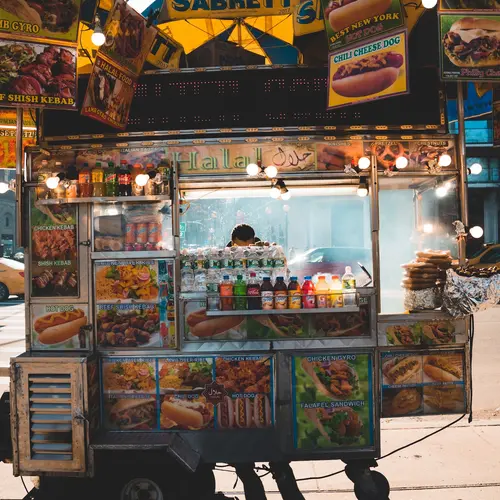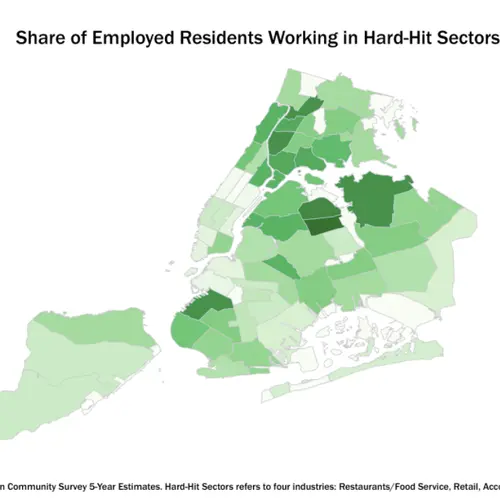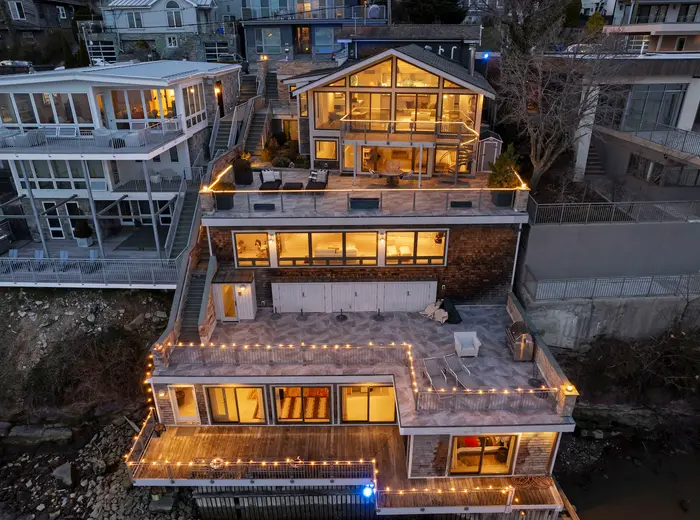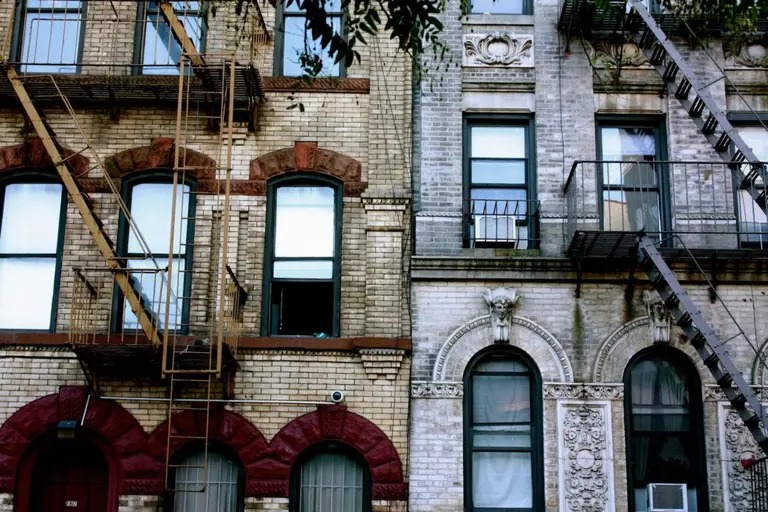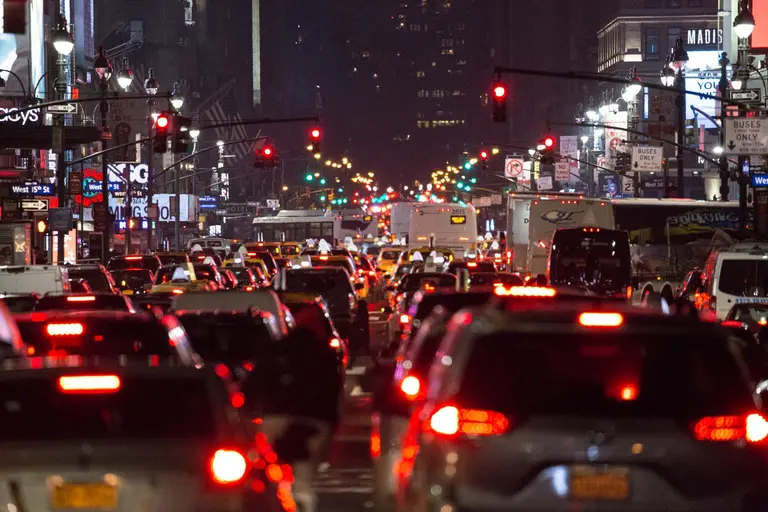Majority of NYC workers in hard-hit retail, restaurant industry live in low-income neighborhoods: report

Photo by Emilie Farris on Unsplash
Nearly every industry in New York City taken a hit financially as a result of the coronavirus pandemic. But the businesses forced to close their doors, or switch to delivery only, because of the state’s”pause” order, including restaurants, retail, hotels, and personal care services, have been especially affected by the current crisis. According to a new report from the think tank Center for an Urban Future, the workers from these hard-hit sectors, where layoffs have been most common, also live in the city’s low-income neighborhoods. And while more than half of the jobs in these industries are located in Manhattan, 81 percent of the workers live in the outer boroughs.
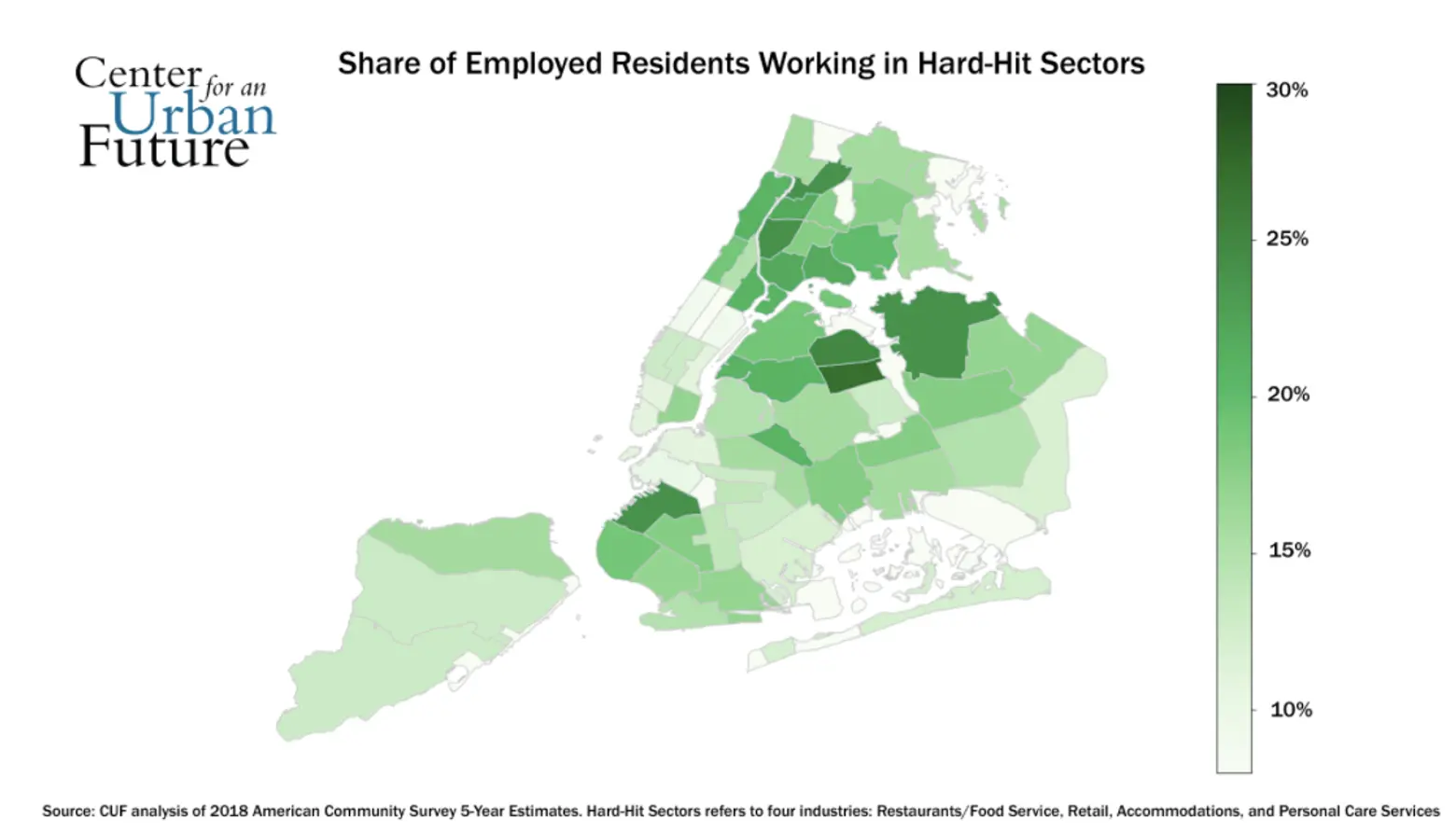
Out of the city’s 55 neighborhoods, as defined by the Census, there are 13 where at least 20 percent of working residents are employed in the restaurant, retail, hotel, or personal care services industry. In all 13 neighborhoods, roughly 71 percent of the population is non-white, and in all but four neighborhoods, 45 percent is foreign-born.
According to the CUF study, the 10 neighborhoods with the largest share of residents employed in those four hard-hit industries include:
- Elmhurst/South Corona (27 percent)
- Noth Corona/Jackson Heights (25 percent)
- Norwood/Bedford Park/Fordham North (24 percent)
- Highbridge/Concourse/Mount Eden (24 percent)
- Sunset Park/ Windsor Terrace (24 percent)
- Flushing/Whitestone/Murray Hill (24 percent)
- Morris Heights/Fordham South/Mount Hope (22 percent)
- Hunts Point/ Longwood/Melrose (22 percent)
- Woodside/Sunnyside (21 percent)
- East Harlem (21 percent)
The neighborhoods with the lowest share of residents employed in the four sectors include:
- Upper West Side (9 percent)
- Upper East Side (9 percent)
- Park Slope/ Carroll Gardens/ Red Hook (10 percent)
- Midtown East/ Murray Hill/ Gramercy/ Stuy Town (11 percent)
- Soho/ Greenwich Village/ Battery Park City (11 percent)
- Brooklyn Heights/ Fort Greene (11 percent)
- Queens Village/ Cambria Heights/ Rosedale (12 percent)
- Canarsie/ Flatlands (12 percent)
- Breezy Point/ Broad Channel/ Far Rockaway (12 percent)
- Chelsea/ Midtown (13 percent)
In the five neighborhoods with the lowest share of residents who are employed in these industries, the population is at least 64 percent white. And no more than 25 percent of the population is foreign born. In comparison, the two areas with the highest number of workers in these sectors, Elmhurst/South Corona and Jackson Heights/ North Corona, 90 percent or more of the population is non-white and more than 60 percent is foreign born.
Data released by the city on Monday shows this unequal impact from the coronavirus among New York neighborhoods goes beyond economic anxieties. Low-income neighborhoods and communities of color are facing higher rates of infection and death caused by COVID-19, according to data from the city’s Department of Health that breaks down the rates of death by ZIP code.
Neighborhoods that have seen the highest rates of death per 100,000 people include Canarsie-Flatlands in Brooklyn, home to the Starrett City housing complex, with 612 deaths, Rockaway in Queens with 445 deaths, Flushing-Clearview with 435 deaths, parts of the East Bronx with 429 deaths, and Coney Island-Sheepshead Bay with 416 deaths.
Communities in western Queens, including the ZIP codes 11369, 11370, 11372, 11368, have been hit hard by the pandemic, with those neighborhoods seeing over 1,200 deaths together. The neighborhoods with the lowest number of deaths in the city are all in Manhattan, including Greenwich Village, Soho, Gramercy Park, Murray Hill, and Chelsea.
Read the full report from the Center for an Urban Future, which includes complete findings by neighborhood including median household income and percentage of bachelor’s degree, here.
RELATED:
